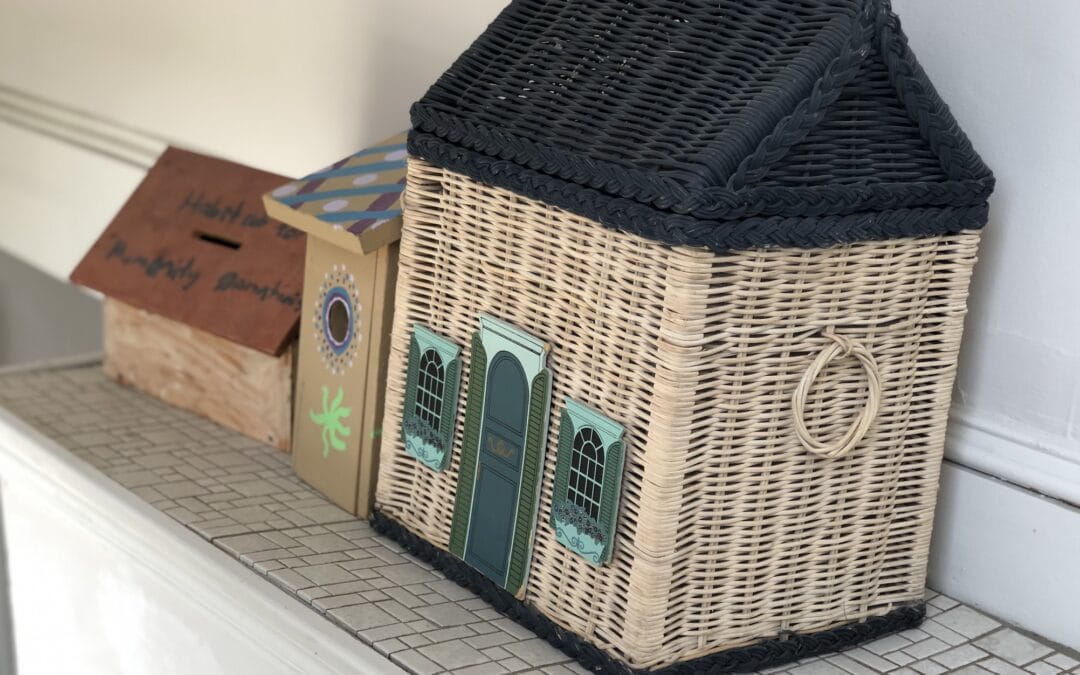Habitat for Humanity of Eastern Connecticut has, as you know, been around for many years.
Since 1987 to be exact. Despite all the work we do in the community, there are still a few misconceptions about Habitat and the programs we offer.
So we are taking this time to clear the air, to bust some myths, and to set the record straight. Read on and see if your fact or fiction meter is strong today!
As we’ve learned over the last few years, media has a significant impact on what we believe. If we read it, hear it or see it, we tend to believe it. Although sometimes we aren’t getting the full story. Sound bites are just that, small snippets of information. When something catches our attention, we think it’s a good idea to look into the story in more detail, to uncover information and make an informed decision on the subject. Here is our fact or fiction break down on the top five myths of Habitat for Humanity.
Fact or fiction: Habitat gives houses away for free.
FICTION: Our homeownership program partners with qualifying applicants who work hard to purchase their own home. The program empowers people to build their future on strength, stability and self-reliance through safe shelter and an affordable mortgage. Habitat homeowners purchase their homes and pay a no-profit mortgage, often for 30 years. The program includes a ‘down payment’ of investing hundreds of hours of sweat equity into the program. These hours are vital to preparing each person to be successful homeowners. Read more HERE.
Fact or fiction: Jimmy Carter started Habitat.
FICTION: While Jimmy Carter is an incredible spokesperson, partner, volunteer and legend for Habitat, the idea that became Habitat for Humanity first started on Koinonia Farm, a community farm outside of Americus, Georgia, that was founded by farmer and biblical scholar Clarence Jordan. On the farm, Jordan and Habitat’s eventual founders Millard and Linda Fuller developed the concept of “partnership housing”. The concept centered on those in need of adequate shelter working side by side with volunteers to build decent, affordable houses. The houses would be built at no profit. New homeowners’ house payments would be combined with no-interest loans provided by supporters and money earned by fundraising to create “The Fund for Humanity”, which would then be used to build more homes. Much remains the same in Habitat’s homeownership program today. Read more HERE.
Fact or fiction: you don’t have to be a Christian to be a Habitat Homeowner.
FACT: It’s true that we are a nonprofit Christian housing organization. It is also true that every aspect of Habitat is open to people of all faiths or beliefs. You can also rest assured that we will not proselytize, nor will we work with entities or individuals who insist on proselytizing as part of their work with us. We stand firmly in our Christian belief that caring for and treating our neighbors as we would like to be treated is paramount to walking this Earth together and goes to the very core of our mission. Our commitment to diversity, inclusion and equity encompasses all people, all races, all faiths, and we vow to never discriminate against another human. Read more HERE.
Fact or fiction: Habitat homes are a burden to taxpayers and the community.
FICTION: In fact, Habitat homes infuse the community with positive benefits throughout the entire life cycle of the home. Each new build provides local jobs and uses locally sourced materials whenever possible. We engage with hundreds of volunteers, many who live in the area where we are building. The generosity of our local partners and community organizations do more than help build homes, they contribute to the improved wellness and vitality of entire communities.
Once purchased, each Habitat Homeowner contributes to the local economy and enhances local tax revenues. By improving or replacing substandard housing, Habitat’s affordable housing model creates active contributions to the local economy in the taxes homeowners pay, the money spent in local businesses, as well as through increase property values in the neighborhood. This model has the potential to improve neighborhoods, expand and strengthen a sense of community while building networks of diversity, inclusion and equity.
Fact or fiction: you have to have construction experience to volunteer.
FICTION: One of our favorite things to do is to train new volunteers how to build a house. Step by step, one nail at a time. When you sign up to volunteer, there are a few training resources on our website to prepare you for your first day. When you arrive on the build site we start with an orientation and introduction to the projects on deck for the day. Then each volunteer gets paired up on small teams with a mentor that walks you through each task, teaching skills and safety along the way. Habitat believes in empowering all people, including our volunteers. There is something very special that happens when someone does something for the first time, has the opportunity to practice, and feels supported and empowered throughout the day. It is those moments that make volunteering for Habitat so special. Learn more about volunteering HERE.
So, how did you do on our fact or fiction quiz today? We hope this was informative and fun to read and has inspired you to get involved with us today. Join our generosity movement as a volunteer, donor, or advocate. Find out more HERE and be in touch soon. 860-442-7890
Habitat for Humanity of Eastern Connecticut has received the highest award from Charity Navigator five years in a row. Find out more about how our organization operates with transparency and financial responsibility HERE.


